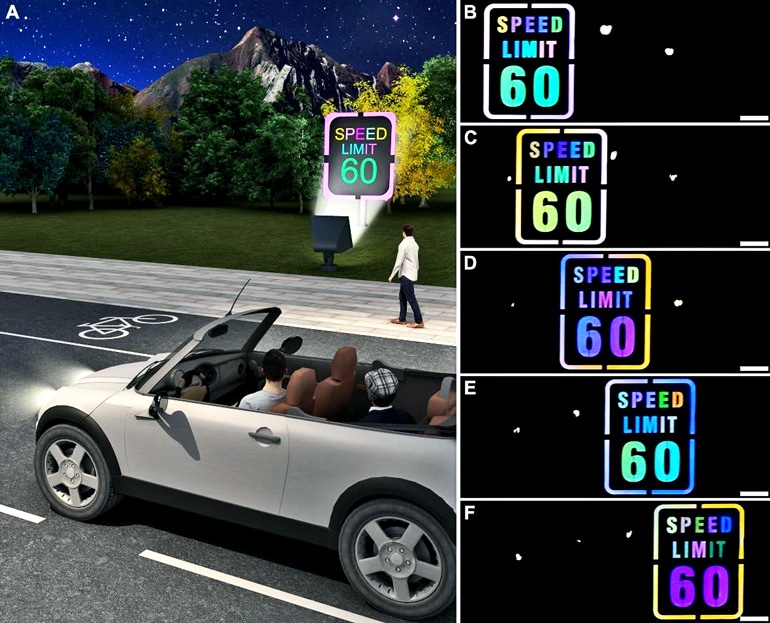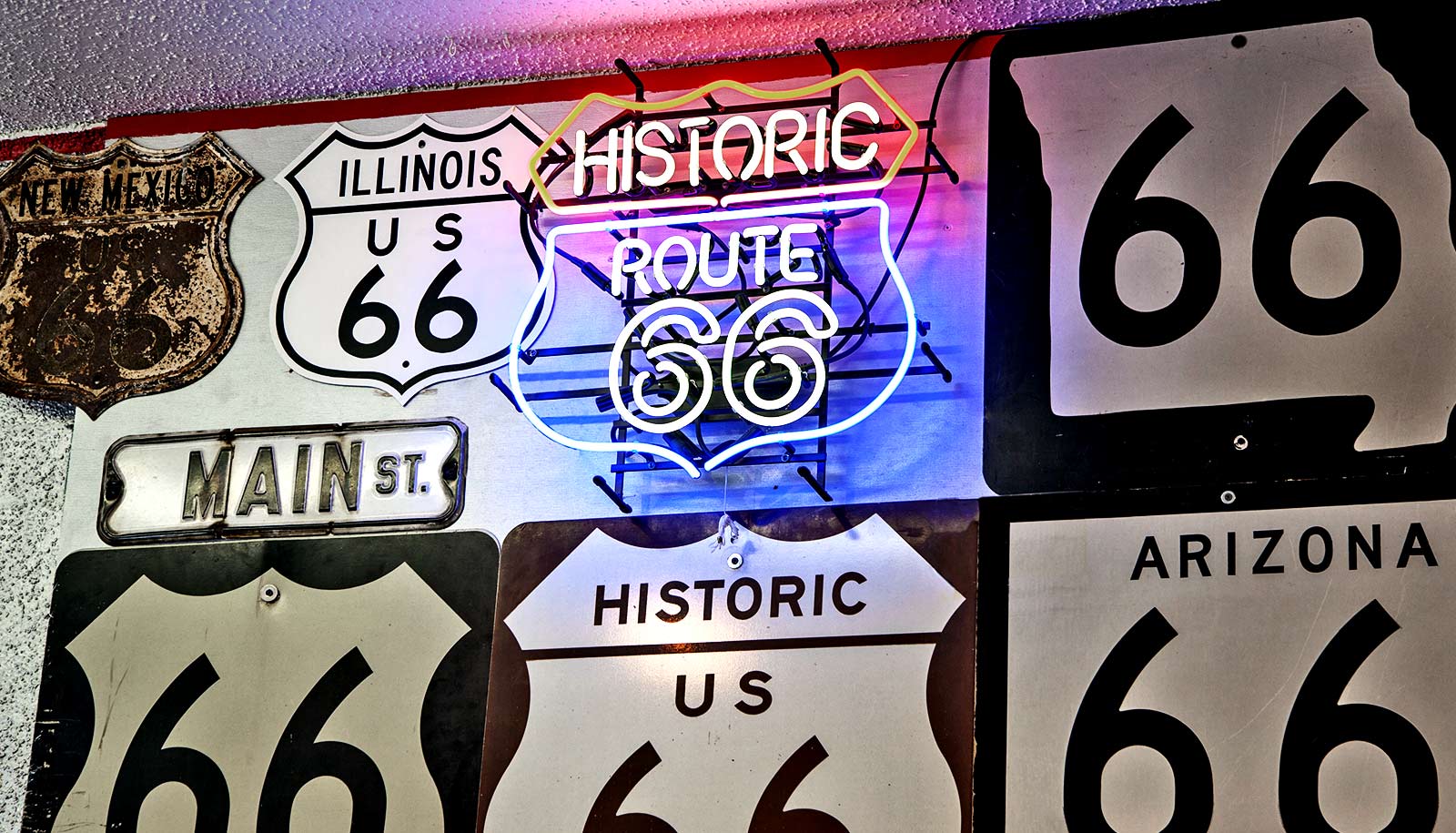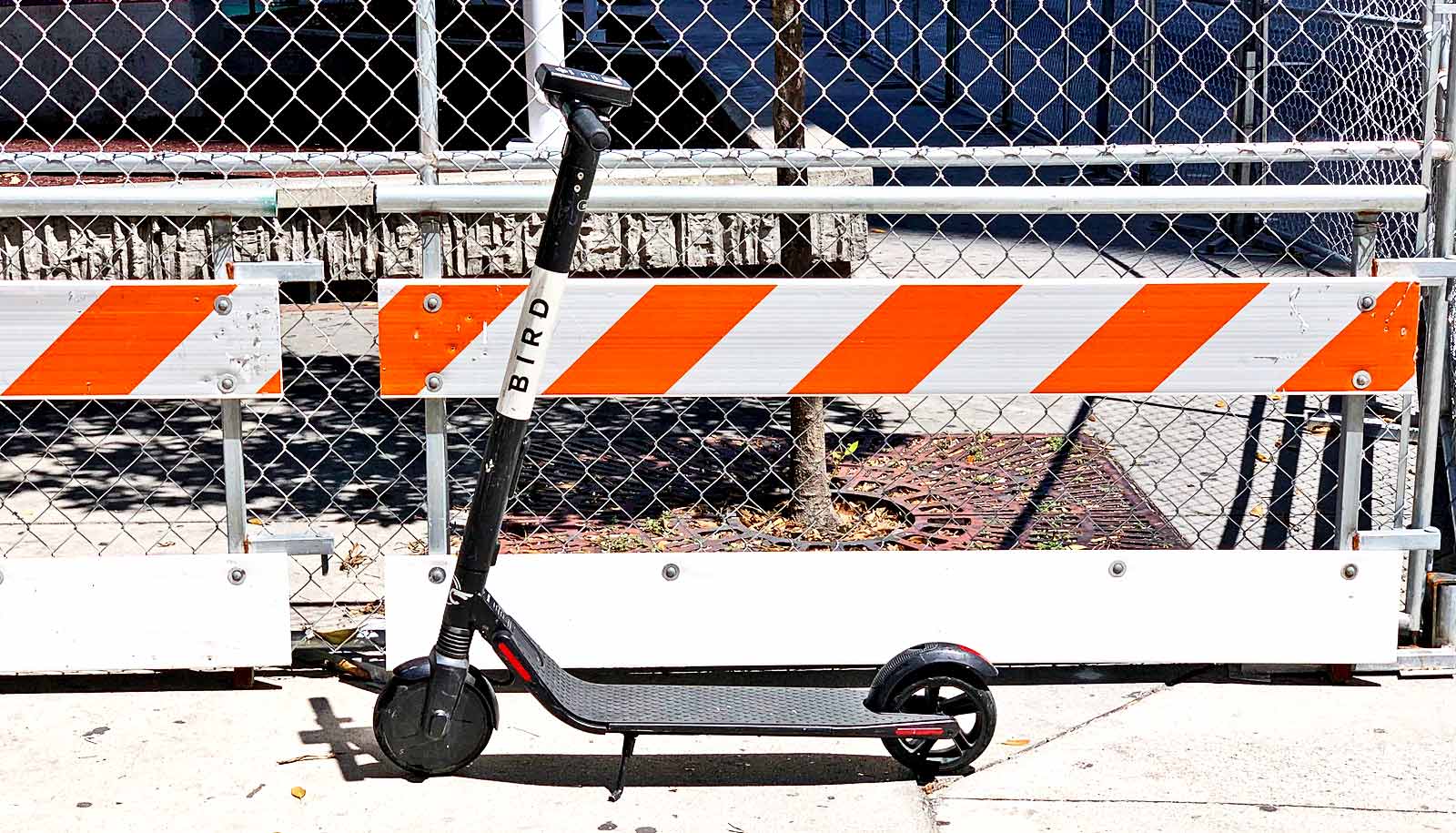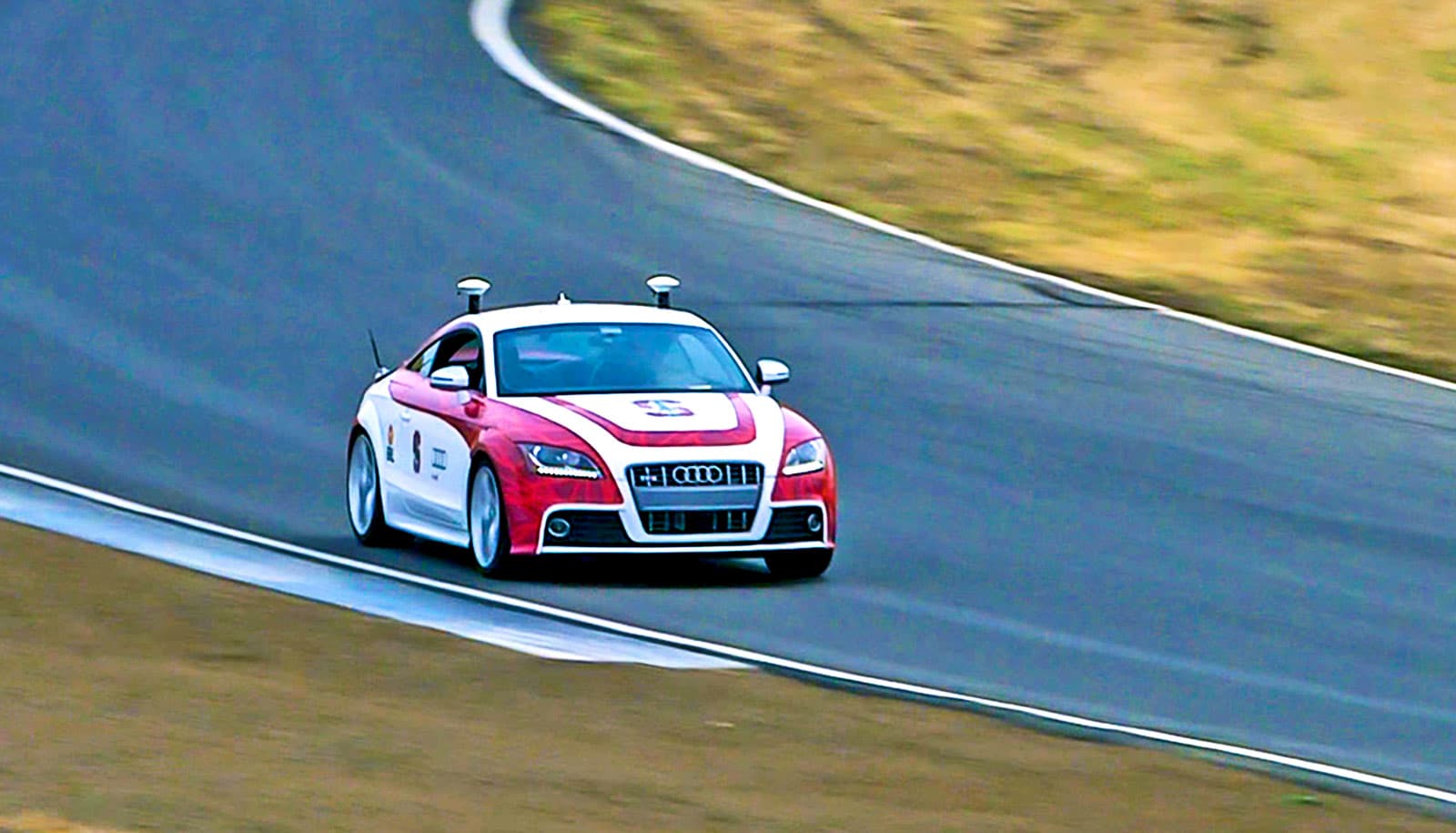A thin film that reflects light in intriguing ways could lead to road signs that shine brightly and change color at night.
The technology could help call attention to important traffic information when it’s dark, with potential benefits for both drivers and pedestrians, the researchers say.
The film consists of polymer microspheres laid down on the sticky side of a transparent tape. The material’s physical structure leads to an interesting phenomenon: When white light shines on the film at night, some observers will see a single, stable color reflected back, while others will see changing colors. It all depends on the angle of observation and whether the light source is moving.

“You can use this material to make smart traffic signs,” says co-first author Qiaoqiang Gan, an associate professor of electrical engineering in the School of Engineering and Applied Sciences at the University at Buffalo. “If a person is listening to loud music or isn’t paying attention while they’re walking or driving, a color-changing sign can help to better alert them to the traffic situation.”
In one set of experiments, researchers created a speed limit sign with letters and numbers made from the new film. The scientists placed a white light nearby to illuminate the sign, and when a fast-moving car drove past, the color of the characters on the sign appeared to flicker from the perspective of the driver as the driver’s viewing angle changed.
In other tests, the team applied the new material to a series of markers lining the side of a road, denoting the boundary of the driving lane. As a car approached, the markers lit up in bright colors, reflecting light from the vehicle’s headlights.
From the driver’s perspective, the markers’ color remained stable. But to a pedestrian standing at the side of the road, the color of the markers appeared to flicker as the car and its headlights sped past.
“If the car goes faster, the pedestrian will see the color change more quickly, so the sign tells you a lot about what is going on,” says coauthor Haomin Song, an assistant professor of research in electrical engineering.
The research appears in Science Advances. Additional researchers from Fudan University in China and the University at Buffalo contributed to the work. Funding for the study came from the National Key Research and Development Program of China and the National Natural Science Foundation of China.
Source: University at Buffalo



